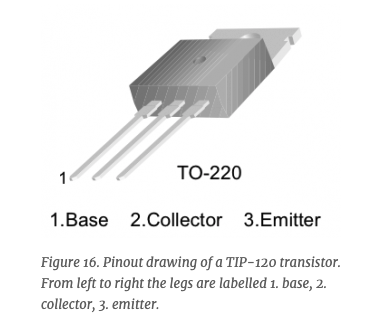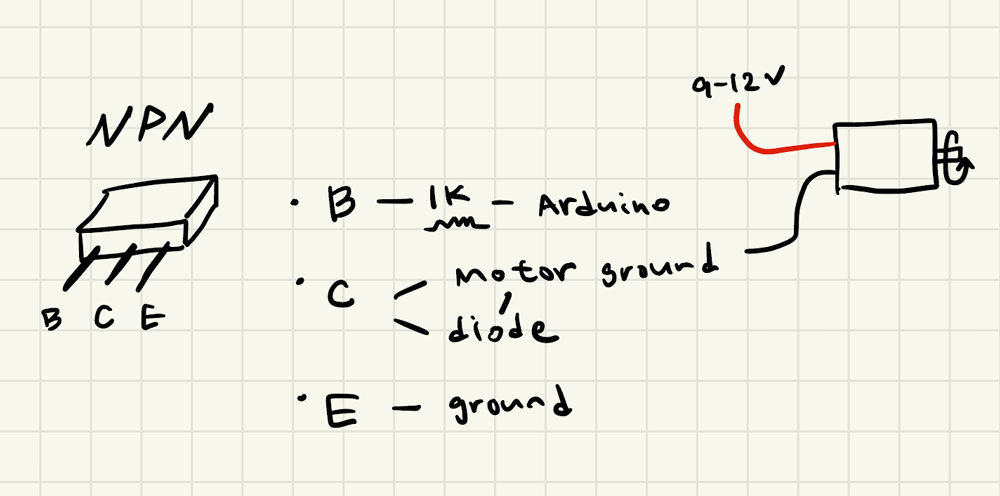Into to Phy Comp 11
Transistor and motors(DC/ stepper/ servo)
motors
How each motor are different from one another?
DC motors
- Keeps moving(rotating)
- Require polarity change to change direction
- Can change speed by changing the current
- When connected to another source, it can cause back voltage, which can be prevented by putting a diode
- Unable to get feedback on the motor’s position
Gearhead DC motor
- Useful when requiring power but doesn’t require a lot of speed
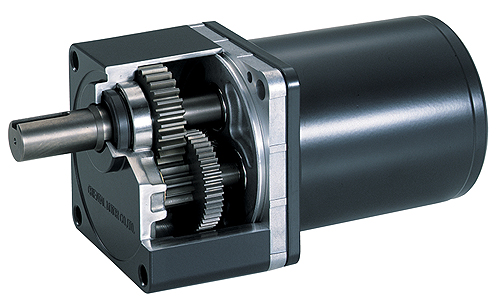
Stepper motor
- Don’t turn continuously, but move in a serious of steps
- Can turn the motor in very precise control (used in 3D printers and etc)
- Have high torque when stopped
- Require polarity change to change direction
- Unable to get feedback on the motor’s position
Servo motor
- Can get feedback on the motor’s position(do not have to reverse the polarity)
Controlling High-Current Loads
Different ways of dealing with high-current loads
Relay
- Mechanical switch(soler than electronical ones)
NPN
- OFF to ON
- Works from higher current to a lower voltage(base, Arduino, should have lower voltage)
- The diode can prevent back voltage(mind the direction)

PNP
- ON to OFF
- Works from lower current to a higher voltage(base, Arduino, should have more voltage)
- The diode can prevent back voltage(mind the direction)
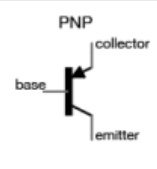
Darlingtons and MOSFETs
- Compared to NPN or PNP, requires negligible current on the base in order to activate
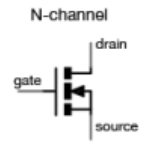
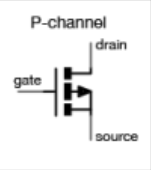
Lab1
Using a Transistor to Control High Current Loads with an Arduino
Q1. Why is 1K resistor needed?
Q2. Why does diode face “C” direction whether than the other way around?
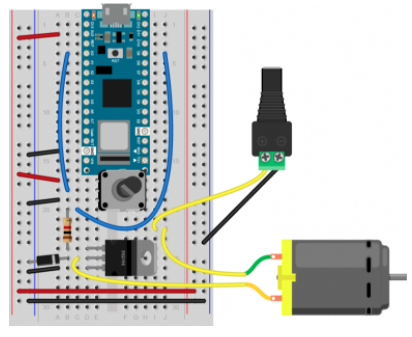
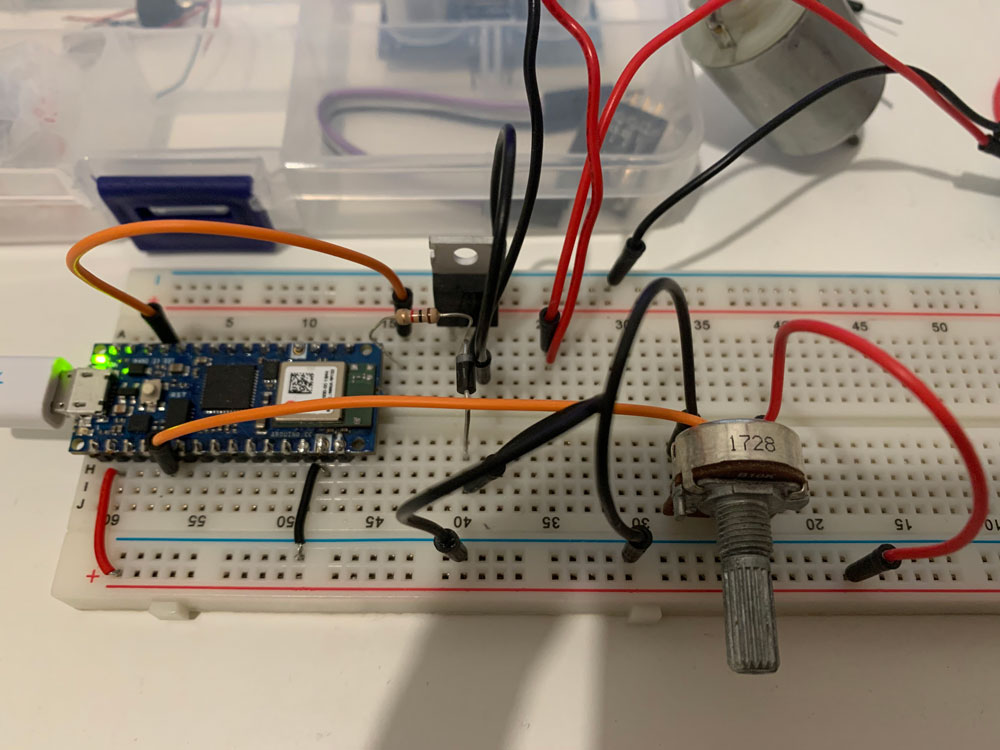
FQP30N06L
